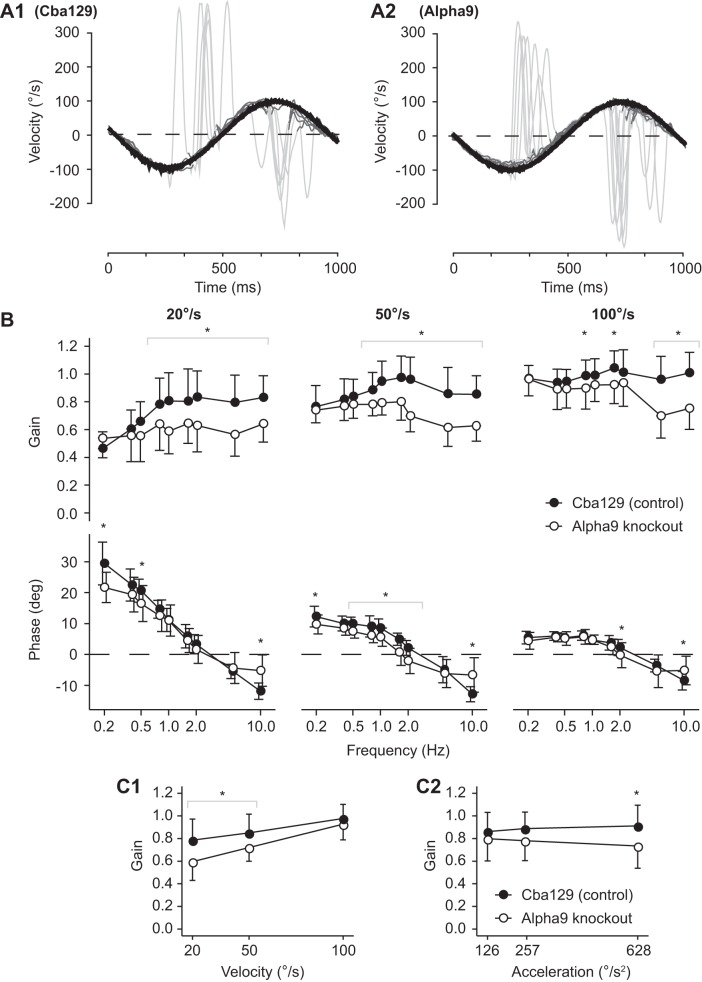Fig. 1.
A: the vestibuloocular reflex (VOR) response to sinusoidal rotations (1 Hz at 100°/s) for 1 cba129 (control) mouse (A1) and 1 α9-knockout mouse (A2) prior to adaptation training. Eye velocity (dark gray) is inverted to allow easier comparison with head velocity. For each stimulus frequency 10–100 individual cycles were superimposed and quick-phase eye movements (light gray) were removed. Least-square pure sine waves were fit to the head velocity stimuli and eye velocity responses to calculate VOR gain and phase. B: baseline VOR gain (top) and phase (bottom) in cba129 control mice and α9-knockout mice. The VOR was measured for frequencies from 0.2 to 10 Hz at peak-velocities of 20, 50, and 100°/s. Error bars indicate mean ± SE. Unlike cba129, α9-knockout mice did not show a characteristic increase in VOR gain for frequencies < 1 Hz at peak velocity of 20 and 50°/s. In addition, α9-knockout mice had significantly lower VOR gains at frequencies > 1 Hz, at all 3 test peak velocities. VOR phase in α9-knockout mice significantly differed from cba129 at low and high frequency extremes. At frequencies < 0.8 Hz at peak velocity 20°/s VOR phase was less than in control mice, while at 10 Hz at all 3 test peak velocities VOR phase was more than in control mice. C: comparison of baseline VOR gain across sinusoidal test stimulus peak velocities (C1) and peak accelerations (C2). Peak acceleration was calculated using the 1st derivative of the velocity stimulus profile. Unlike cba129 mice, the VOR gain decreased as stimulus peak acceleration increased in α9-knockout mice, whereas the VOR gain increased as peak velocity increased in both mouse types but more so in α9-knockout mice. *Significant difference between mouse type baseline gains or phases.

